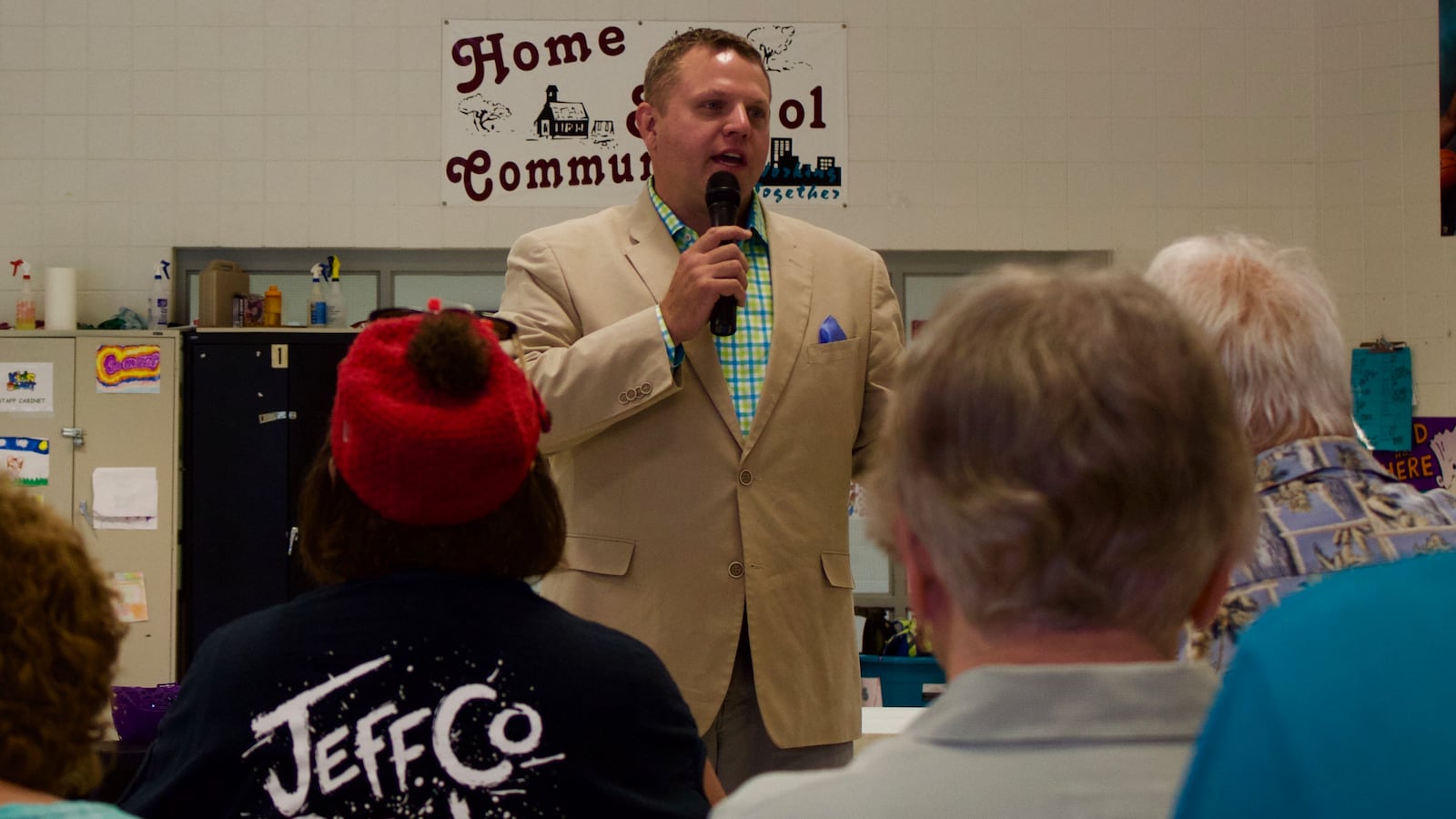Superintendent Jason Glass of the Jefferson County school district isn’t interested in talking about gun control in the wake of yet another deadly school shooting.
Home of Columbine High School, Jefferson County is no stranger to these tragedies or their aftermath, and Glass doesn’t think calls for restricting firearms will get any more traction this time than they have before. Nor is he interested in talking about arming teachers, a proposal he considers just as much of a political dead end.
“A solution is only a solution if we can actually enact it,” Glass wrote in a blog post published Monday. “We are not able to get either of these solutions passed into law so they have no impact.”
That doesn’t mean there’s nothing to talk about, he wrote. Glass lays out four ideas that he sees as more politically feasible and that might make a difference:
- Put trained, armed law enforcement officials in every school
- Increase funding and support for school mental health services
- Create a federally funded center to study school safety and security
- Change the layout of and access to school buildings to make them safer, much the way we’ve renovated airports, stadiums, and other public facilities
Glass describes these measures as “proactive, preventative, and reactive steps that would make a big impact in making our schools much safer than they are today.”
Some schools and districts already have an armed police presence on campus or offer mental health services, but Glass argues these efforts need more money, more support, and more cohesion.
“These solutions need to come from the federal level to create the scale and impact we really need,” he wrote. “Congress and the President need to act and now. … Flexibility and deference can be built into these solutions to accommodate differences across states and communities – but we have a national crisis on our hands and we have to start acting like it.”
Of course, even studying something, as Glass envisions this new center on school safety doing, can be political. Since 1996, the federal government, at the urging of the National Rifle Association, has placed tight restrictions on the ability of the Centers for Disease Control to study gun violence as a public health issue.
The blog post provoked a vigorous debate in the comments. Some called on Glass to join the national movement demanding more restrictions on firearms. This is not a time for “half measures,” one woman wrote.
Others said that turning schools into “fortresses” would work against their educational mission and questioned how well school resource officers could be trained to respond appropriately to students with special needs – or how fair the district-level threat assessment process is.
In the wake of another school shooting at Arapahoe High School in 2013, one largely forgotten outside the state, Colorado legislators passed a law that holds schools liable for missing warning signs in troubled students.
In an interview with Colorado Public Radio, Bill Woodward, a former police officer who trains schools in how to prevent violence, said more schools are doing threat assessments. But their success may require schools to take even more seriously the idea that their own students might be dangerous.
“I think the biggest barrier is the climate of the school, because I think sometimes schools are just thinking in terms of working with students, helping students out,” Woodward told CPR. “And sometimes when you’re looking at someone who’s made a threat, you have to change to the Secret Service model.”
Woodward said a more comprehensive solution may involve gun control. Schools can’t afford to wait, though.
“There is no silver bullet, speaking metaphorically, but I think gun law changes may well be needed,” he said. “I just think we have to do what we can do now, and we can do things now.”

